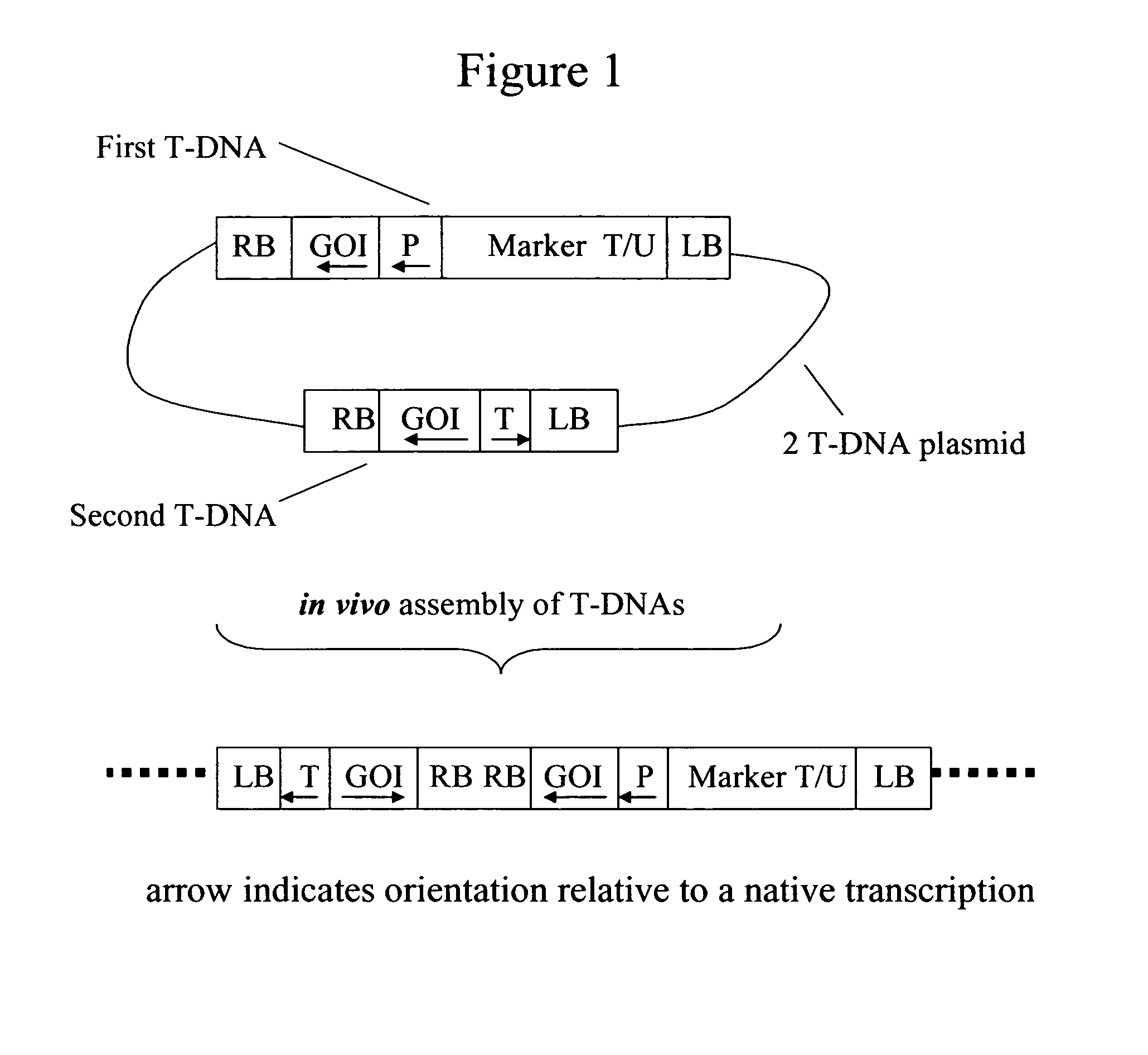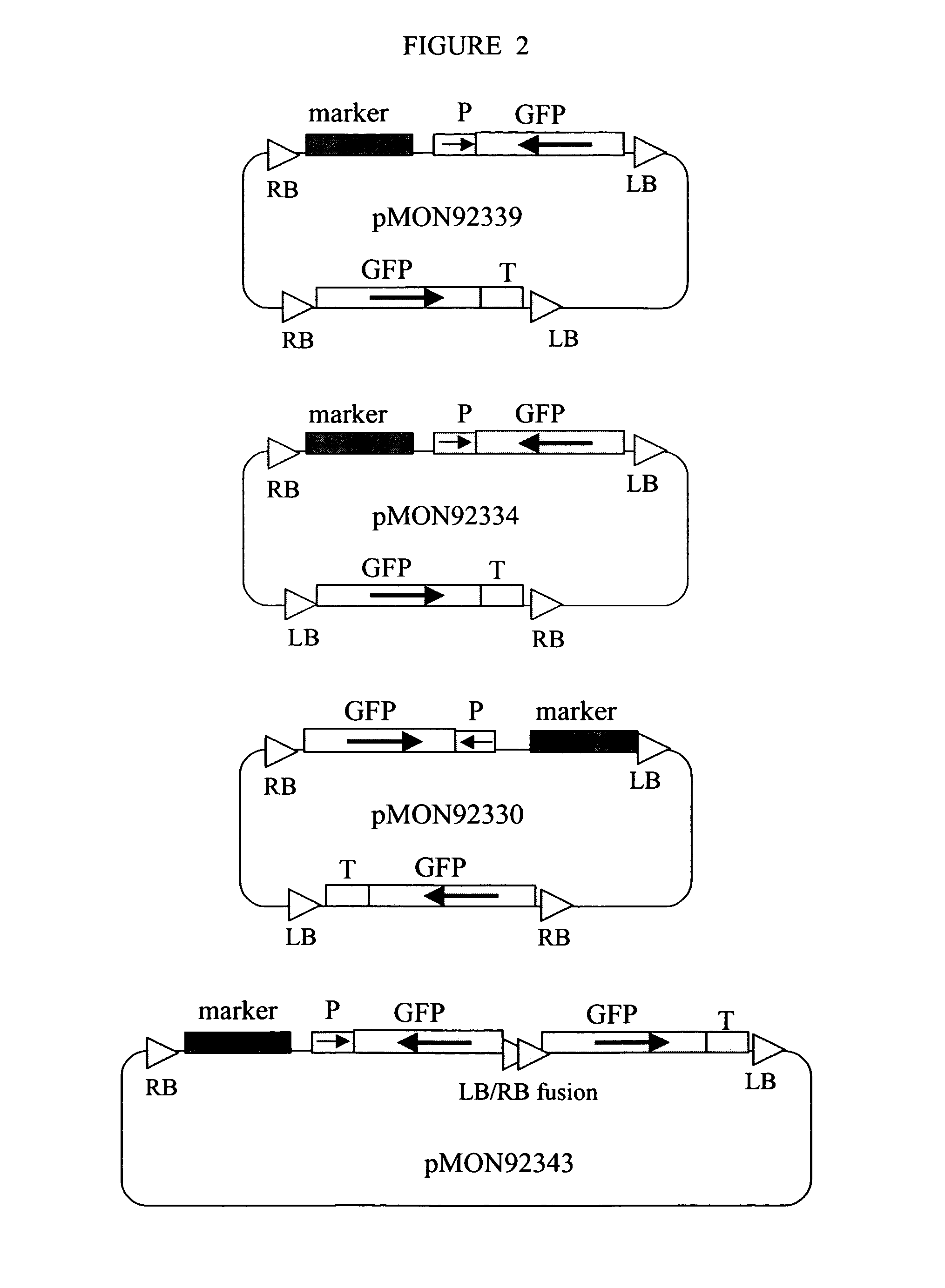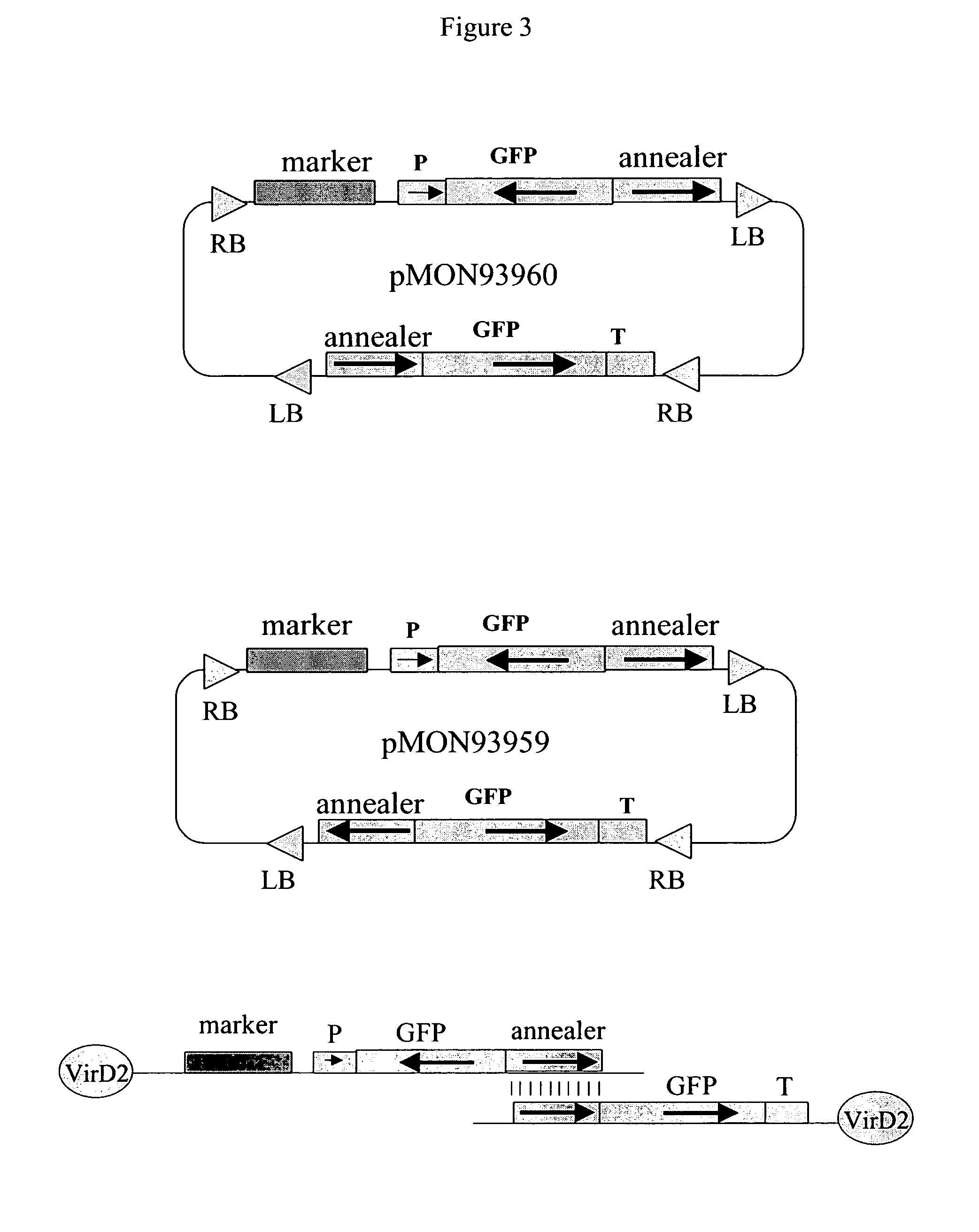In vivo assembly of transcription units
a transcription unit and assembly technology, applied in the field of assembly of transcription units, can solve the problems of patent rights that limit the possibility of insertion of a recombinant transcription unit into an organism, and achieve the effect of facilitating the selection of an intended assembly
- Summary
- Abstract
- Description
- Claims
- Application Information
AI Technical Summary
Benefits of technology
Problems solved by technology
Method used
Image
Examples
example 1
[0051]This example illustrates the design of a 2 T-DNA plasmid vector for in vivo assembly of a recombinant transcription unit, which can be used to suppress an endogenous plant gene. With reference to FIG. 1, a plasmid vector is prepared with two T-DNAs, each flanked by Agrobacterium T-DNA border elements, i.e. right border DNA (RB) and left border DNA (LB).
[0052]The first T-DNA comprises a left T-DNA border (LB), a transgenic insertion-selectable marker (Marker T / U) for glyphosate herbicide resistance, a promoter (P) functional in plants, transcribable DNA from a gene targeted for suppression (GOI) and right T-DNA border (RB), schematically represented in FIG. 1 as “RB-GOI-P-Marker T / U-LB”. More specifically, the Marker T / U comprises a constitutive promoter derived from a figwort mosaic virus (eFMV) operably linked to a 5-enolpyruvylshikimate-3-phosphate synthase gene (as disclosed in U.S. Pat. No. 5,627,061 (Barry, et aL), U.S. Pat. No. 5,633,435 (Barry, et al.), and U.S. Pat. No...
example 2
[0054]This example illustrates the design of a 2 T-DNA plasmid vector for in vivo assembly of a recombinant transcription unit to suppress two endogenous plant genes. The plasmid vector is prepared as described in Example 1 except that the GOI in each T-DNA comprises DNA from the soybean (G. max) genes FAD2 and FAD3 (as disclosed in U.S. patent application Publication No. 2004 / 0006792 A1). The 3′ 300 bp of the intron of soy FAD2-1A, together with intron 4 of soy FAD3A, were combined and placed under the seed-specific promoter 7Sa′, and cloned into the in vivo assembly vector as described in Example 1. In addition, for over expression purposes, the Cuphea pulcherrima KASIV (U.S. patent application Publication No. 2003 / 00635822 A1), driven by the eUSP88 promoter (U.S. patent application Publication No. 2003 / 00229918 A1), and Ricinus communis delta 9 desaturase (U.S. Pat. No. 5,723,595), driven by the promoter 7Sa, were inserted into the T-DNA 1, resulting in a plasmid vector denoted p...
example 3
[0056]This example illustrates plant transformation using the 2 T-DNA plasmid vectors prepared in Example 2. The vectors were introduced into soybean callus using Agrobacterium-mediated transformation methods as described by Martinell in U.S. Pat. No. 6,384,301. Transformed soybean cells were identified as containing the first T-DNA by selection on a medium containing glyphosate herbicide. Subsequently, the genomes of transformed plant cells were screened for concurrent tandem insertion of the first T-DNA and the second T-DNA, i.e. in the “right border to right border” assembly, as shown in FIG. 1. This screening was done by Southern hybridization mapping methods. Alternatively, PCR methods could be used for screening. Transformed soybean plants containing the preferred configuration in their genome were transferred to a greenhouse for seed production.
[0057]For example, leaf tissue was taken from the R0 plants transformed with plasmid vector pMON83539 and Southern analysis was perfo...
PUM
| Property | Measurement | Unit |
|---|---|---|
| length | aaaaa | aaaaa |
| resistance | aaaaa | aaaaa |
| virus resistance | aaaaa | aaaaa |
Abstract
Description
Claims
Application Information
 Login to View More
Login to View More - R&D
- Intellectual Property
- Life Sciences
- Materials
- Tech Scout
- Unparalleled Data Quality
- Higher Quality Content
- 60% Fewer Hallucinations
Browse by: Latest US Patents, China's latest patents, Technical Efficacy Thesaurus, Application Domain, Technology Topic, Popular Technical Reports.
© 2025 PatSnap. All rights reserved.Legal|Privacy policy|Modern Slavery Act Transparency Statement|Sitemap|About US| Contact US: help@patsnap.com



